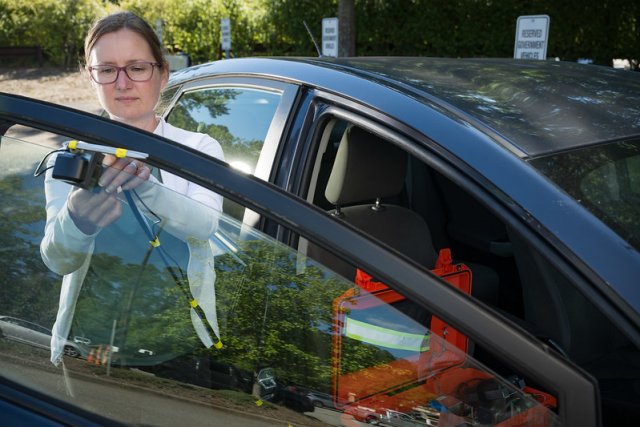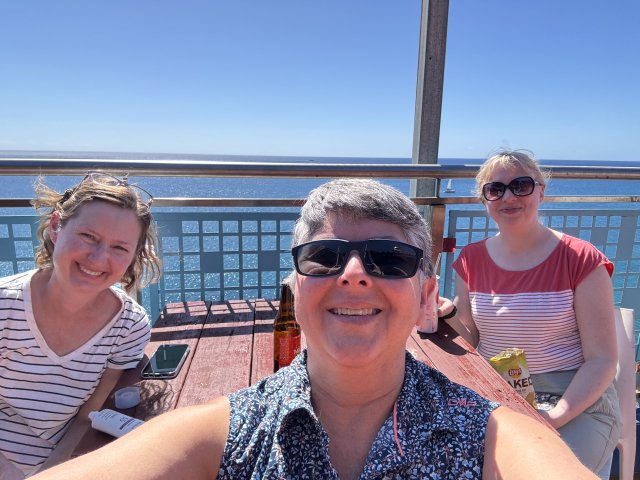Meet EPA Researcher Amara Holder, Ph.D.

EPA researcher Amara Holder works on characterizing emissions from combustion sources. She has also applied her skills to looking at low-cost approaches to measuring emissions, the impact of outdoor emissions in the indoor environment, and how best to reduce human exposure to these pollutants indoors. While she has looked at many different combustion sources (in situ oil burning, gun firing, diesel generators, etc.) she has spent most of her time at EPA working on biomass burning sources such as wildland fires and woodstoves. Currently she is measuring emissions from a large-scale structure fire at the Bureau of Alcohol Tobacco and Firearms that is meant to inform on the type of emissions from wildland urban interface fires. Finally, she is working with EPA’s sensor evaluation team to evaluate carbon monoxide sensors for wildfire smoke and sending these sensors off to air resource advisors working on wildfires throughout the western United States.
Tell us about your background.
I have bachelor’s, master’s, and Ph.D. degrees in mechanical engineering with a focus on combustion. I had minors in environmental health science and immunology to better understand the intersection of combustion emissions with human health.
When did you first know you wanted to work in environmental science?
When I started my Ph.D. project examining the health effects of diesel exhaust, I realized how I could use my knowledge of fundamental combustion processes and their impact emission composition to better understand the impact of combustion emissions on public and environmental health.
What do you like most about your job?
I love doing field work! Observing physical processes in the real world provides so much more context and understanding of an environmental challenge that is hard to obtain by looking at data alone. It also doesn’t hurt that it gets me out of the office.
How does your science matter?
Much of my research supports the nuts and bolts of EPA’s regulatory system through the National Emissions Inventory. However, some of my research results are directly translated into public health guidance, that helps people make better decisions to protect their health. It’s been so gratifying to see the DIY air cleaner evaluation data we generated in the lab be used to develop an infographic on how to build the ‘Good’, ‘Better’ and ‘Best’ DIY air cleaners. This infographic is widely shared during wildfire events, and I’ve seen numerous examples of people take the recommended action to protect themselves from wildfire smoke.
If you weren’t a scientist, what would you be doing?
I would be a helicopter pilot.

What advice would you give a student interested in a career in science?
Find a research topic you are passionate about. Research is not a linear path, there can be lots of twists and turns sometimes resulting in failure. Having passion about your research area will keep you motivated and resilient when research doesn’t go as planned and don’t forget that failure can be one of the best opportunities to make an important discovery.
If you can have any superpower, what would you choose?
The power to cure all diseases, it could make such a difference in the lives of so many people.
What do you think is our biggest scientific challenge in the next 20/50/100 years?
Our biggest challenge is how to address climate change. There are so many dimensions to this problem that need scientific input – our understanding of the physical aspects of the world, engineering approaches to reduce emissions and mitigate emission impacts, and social science to understand how to effect change across nations.
Editor's Note: The opinions expressed herein are those of the researcher alone. EPA does not endorse the opinions or positions expressed.
